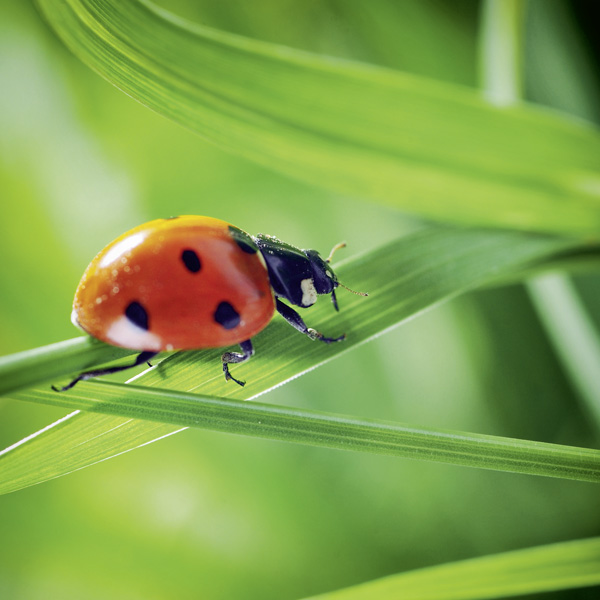 In 3 steps fit for spring!
In 3 steps fit for spring!
When the snow has melted and reliable daytime temperatures rise to stable 10 °C, the spirits of the lawn awake. But you need a bit of patience before the important spring-care begins.
Step 1: Sharp blades
Take your lawnmower to service and sharp the blades. Sharp blades are the best conditions for a healthy, well-kept lawn.
Step 2: Your lawn is older than a year? De-thatch!
If the soil is hard-dried, it´s showtime: if the lawn is older than a year, you have to de-thatch it. This is necessary to rid the lawn of the old trampled stalks, moss and felt to get a new, dense grass-carpet which consists exclusively of grass stalks. Then you have to open the turf about 3 Millimeters with the scarifier. With this process you ventilate the lawn and stimulate the root growth at best. Older lawn-stock can be airing in between and after de-thatching again and again - the supply of oxygen to the roots affects always positive for any lawn.
Young lawn, freshly laid in late summer or fall of the previous year: aerate
Aerate young lawn - especially when he was transferred in autumn – tender and only with the broadfork to stimulate growth. De-thatching with 3 mm depth is too intense for young grass.
Step 3: Supply with nutrients!
After de-thatching and / or aerating, the lawn is ready for a high quality fertilizer that slowly releases its nutrients. Particularly in spring you have to take attention on the quality of the fertilizer - a fertilizer that releases too quickly its nutrients, promoting the growth indeed, but not the quality of the new grass stalks. Give your lawn some time and use a slowly releasing fertilizer - around the ice-men in May, it will eventually become cold again. So your lawn should be strengthened to withstand a small cold snap.

